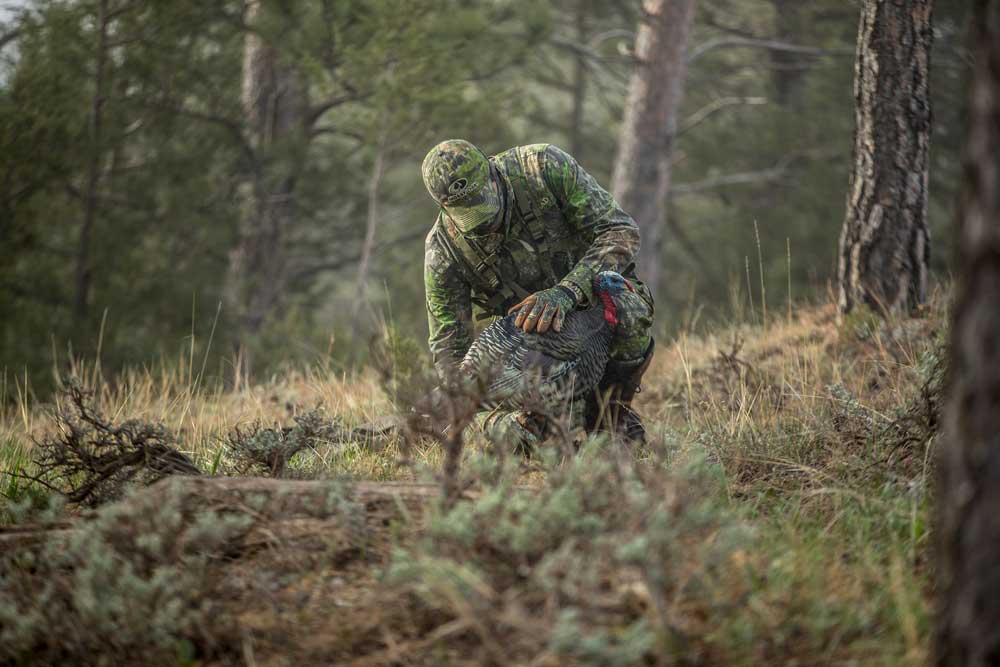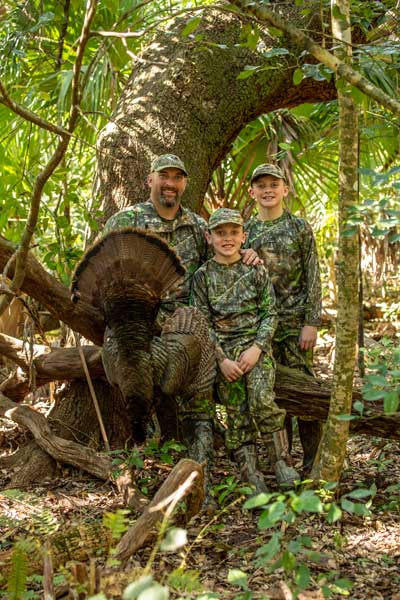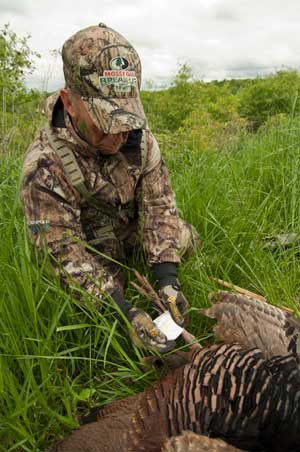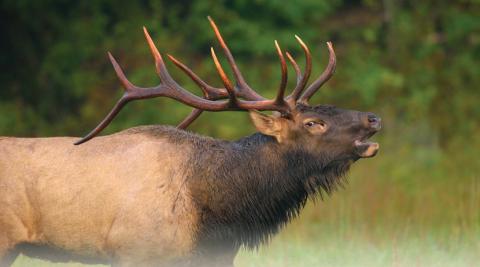provided by John Phillips
Dr. James Earl Kennamer is the retired chief conservation officer of the National Wild Turkey Federation (NWTF) in Edgefield, South Carolina. He’s spent 60 years hunting and researching the wild turkey. He received a B.S. in wildlife management from Auburn University and a master’s degree and a doctorate from Mississippi State University.

Editor: What can hunters and sportsmen do to help the plight of the wild turkey and to increase the number of birds we have to hunt each season?
Dr. Kennamer: I think there's combinations of several items that need to be addressed to help solve this problem. First of all, we need to explain to the general public that the wild turkey was brought back from the edges of extinction, mainly because of the Pittman-Robertson Act, which has put taxes on arms and ammunition. These types of taxes have funded state wildlife agencies to help restock, create habitat to continually research the growth of turkey flocks throughout their states and setup seasons and bag limits to ensure the continued growth of turkey populations. We need to educate the population of non-hunters to understand that hunters primarily have been responsible for funding the research, restocking and growth of turkey populations nationwide.
We also need to teach our young people to appreciate the sport and the challenge of hunting wild turkeys as being more than just the killing of turkeys. We need to work diligently to recruit new turkey hunters, because those young people are the future of the conservation of turkeys and also of turkey hunting. They’ll be the ones paying the price to ensure the future of the wild turkey in this country. I think education along the lines I’ve just mentioned is a big part of the future of the wild turkey.
The second ingredient that’ll determine the future of the continued growth of the number of wild turkeys we have to hunt and enjoy and stop the decline of the wild-turkey population, is the management of state turkey flocks. This management is almost solely dependent on your support of the wildlife agencies in your state and the federal agencies like the U.S. Forest Service, and the U.S. Fish and Wildlife Service and the National Wild Turkey Federation. The National Wild Turkey Federation is helping states manage turkey habitats and turkey numbers and helping private landowners do a better job of managing the turkeys on their properties too.
 The future of the wild turkey is dependent on educating about wild turkeys and getting people involved, helping state agencies manage the turkeys in their state and working with landowners to know how they manage their farms, how your neighbors manage theirs and how the people who own the land you hunt on manage their lands for deer, turkeys and all wildlife. We have to remember that habitat produces turkeys. The more turkey habitat, the better and faster their numbers can grow, and they can recover.
The future of the wild turkey is dependent on educating about wild turkeys and getting people involved, helping state agencies manage the turkeys in their state and working with landowners to know how they manage their farms, how your neighbors manage theirs and how the people who own the land you hunt on manage their lands for deer, turkeys and all wildlife. We have to remember that habitat produces turkeys. The more turkey habitat, the better and faster their numbers can grow, and they can recover.
Editor: Many public lands and state wildlife management areas are doing great jobs of managing their lands for wild turkeys. However, in many states, hunters have hunting leases that are primarily for deer hunting. What can hunting clubs do to better manage their lands for wild turkeys, while they are setting up for deer next fall for this spring?
Dr. Kennamer: When you’re putting in food plots, include crops like millet and other seeds that turkeys and quail can use - possibly on the last one or two rows of your green fields. When you plant your food plots in the fall, plant clover mixed with oats or winter wheat to create some winter forage for the turkeys. The hens and poults will use that forage to find and feed on insects, and the hens can lay their eggs there.
I think if you manage your food plots, whether they’re for spring or summer that you always need to consider what can help wild turkeys to increase their habitat and their numbers on your property. Consider doing controlled burns, and discuss these management practices with your landowner. Try to maintain the roadsides you use to go back and forth in and around the land to provide habitat for turkeys.
Look at the property, and evaluate what you’re already doing regarding green fields and roadsides that can be tweaked a bit to help out the turkey population. Wildlife management requires a plot-by-plot prescription of what to do with the land to improve it for wild turkeys and white-tailed deer. State departments of conservation and county offices can help evaluate what you’ve got on a property and make recommendations on what’s the best prescription for increasing turkey populations on the land you hunt.
Editor: One of the things you recommend is to utilize the wood roads on the land where we hunt. What do you mean by “roadside management?”
Dr. Kennamer: Depending on whether you own the land or lease it, clean back 15 to 20 feet on the sides of the road on the land to give long, linear sections running through the property where you can plant food for the poults and for the mature turkeys. Also, if you have power line rights-of-way on the properties you hunt, you can clean that 15 to 20 feet on the edges and plant seed crops that not only will provide food for poults and mature turkeys, but nesting areas as well.
 Editor: What’s your position on predator control as it impacts turkeys?
Editor: What’s your position on predator control as it impacts turkeys?
Dr. Kennamer: Mississippi State University has spent a lot of time over about 20 years conducting studies with a number of different students about predator control. One doctoral student compiled all that information, and at the end of the 20 years of study on predator control, the study determined that predator control, basically, doesn’t work, unless you do it on a large property. Your money will be better spent on planting food plots and doing roadside management. Here’s why: If you catch all the coons, possums and other nest predators and adult turkey predators, your neighbors will have predators that’ll move on to your property and fill the spaces the predators you’ve removed have left open. So, the money you spend on predator control isn’t going to pay back in turkeys what habitat management will. Habitat management is where I recommend that those who hunt wild turkeys and are interested in growing wild turkey populations spend their money.
Another thing about predators is you can’t control avian predators (hawks, owls, eagles), and you can’t control the snakes that’ll eat the turkey eggs. Instead of predator control, I’d spend my money on habitat management. Now don’t get me wrong, predator control makes hunters feel good by removing the predators that prey on turkeys, however, studies have shown that, for the most part, predator control doesn’t work.
Editor: For instance, if you have 40 acres or 400 acres to hunt on, and your property is surrounded by 4,000 acres, if you and your neighbors are managing yours and their deer herds, everyone will benefit from the efforts. The same thing is true of predators. If you’re managing predators on your 40 or 400 acres, but your neighbors around you aren’t, as soon as you eliminate your predators, your neighbors' predators will expand and replace the ones you removed.
Dr. Kennamer: That’s exactly right. There's a portion of predators you can manage: ground predators, with the exception of snakes. By law, you cannot control avian predators. The predators on your neighbors’ properties are looking for new places to be. Yes, you can harvest the coons, possums and coyotes, and that’ll probably help some. However, in the long run, this harvest won’t drastically help the turkey population. However with the habitat management I’ve suggested, you can increase the number of turkeys that your property can produce.
Another thing a hunting club can do is to self-impose turkey limits amongst the members. If you’re managing a lease, you can tell the others, “We don’t all have to take the turkey limit every season.” Instead set a lesser limit than what the state limit is for the number of turkeys to be harvested on the property you hunt.
One thing I want to know when I go turkey hunting is that I’m in the presence of a turkey. Now, that doesn’t mean I have a turkey at the end of my barrel. What I want to know is that there are turkeys on the land that I can attempt to hunt.



























